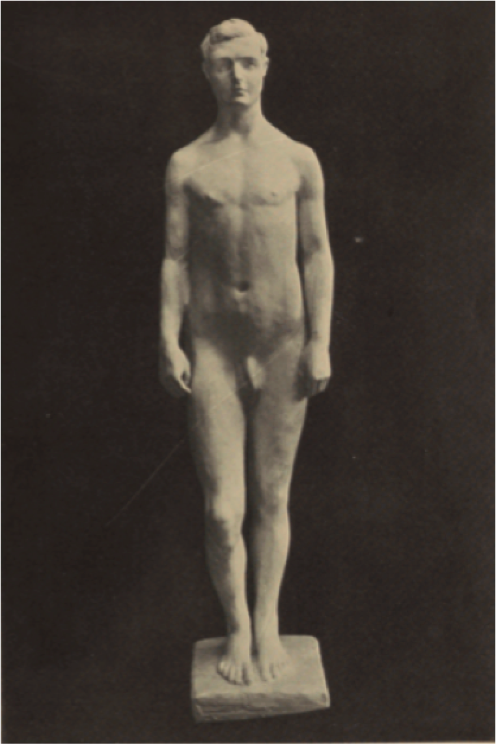Image adapted from “The second International Exhibition of Eugenics held September 22 to October 22, 1921, in connection with the Second International Congress of Eugenics in the American Museum of Natural History, New York : an account of the organization of the exhibition, the classification of the exhibits, the list of exhibitors, and a catalog and description of the exhibits” by Harry H. Laughlin.
Overview
With funding from Mary Harriman and the support of the American Museum of Natural History, Superintendent of the Eugenics Record Office Harry H. Laughlin temporarily transformed Forestry Hall into Eugenics Hall from September 22 to October 22, 1921. Eugenics Record Office staff guided an estimated 5,000 – 10,000 visitors through 131 exhibits from around the world that championed the promise of selective human breeding.
Laughlin organized the Eugenics Hall to reinforce the logic of the Second Congress, supposedly connecting scientific research to social policy. Displays on the east side of Eugenics Hall explored research on genetics and heredity opposite displays on the west side dedicated to race science, immigration, and public policy.

The map is portrayed in black and white in landscape mode, with the entrance at the right side of the page. Each station of the exhibit is depicted by a shape, as well as a corresponding number and description. #1-8 are on the top of the map (right side of the hall) and #9-18 are on the bottom of the map (left side of the hall). There is an archway and sign in the entranceway and the space is labelled as “Darwin Hall.” Robert Tait McKenzie’s statue of ‘The Athlete’ is positioned at the front of the hall and Jane Davenport Harris’s ‘Average Young American Male’ sculpture is at the back of the hall.
Next to the Eugenics Record Office information booth at the southern entrance to the hall was Robert Tait McKenzie’s bronze sculpture The Athlete, based on the measurements of the “50 strongest men of Harvard” to illustrate the promise of better breeding. At the northern end of the hall sat Jane Davenport’s plaster sculpture The Average American Male “based on the proportions of 100,000 white soldiers” drafted into World War One as tabulated by the Eugenics Record Office to suggest the dangers of race degeneracy.

The black sculpture is displayed on a black square base in front of a gray background in this photograph. The man stands upright with his left leg straight and his right leg back, with his left toes touching the ground at an angle and his right heel up. The man is turned to the right side, with his left arm crossing his body and his fingertips of both hands touching each other like he is cradling a ball. Though his head faces downward in the direction of his hands, the side profile of his face appears European. His shoulders, chest, and legs have been made to look muscular.

The sculpture is made out of white plaster and depicts a naked man standing on a white square base. He is of medium build and faces forward, with his left leg straight and right knee slightly bent. The man displays a neutral look, has hair parted to the right side, and appears to be of European descent. The right side of his face is shown more in shadow and looks slightly uneven to the features on the left side of his face. While his arms show some definition, the remainder of his body is depicted as not being muscular. The sculpture is positioned in front of a dark background.
Eugenics Hall engaged in divisive policy debates. At the time, many state courts and legislatures were reconsidering their sterilization laws and Congress was considering further restricting immigration. When Eugenics Hall closed at the American Museum of Natural History, Laughlin brought many of the displays down to the Capitol building in Washington, D.C. as part of his efforts to convince Congress to enact supposedly eugenically beneficial legislation.
Many observers at the time recognized that many of the theories advocated at the Second Congress were unscientific and dangerous, including some attendees themselves. This site puts selected images and quotes from the Eugenics Hall exhibit catalog alongside those of contemporary critics.
You must be logged in to post a comment.